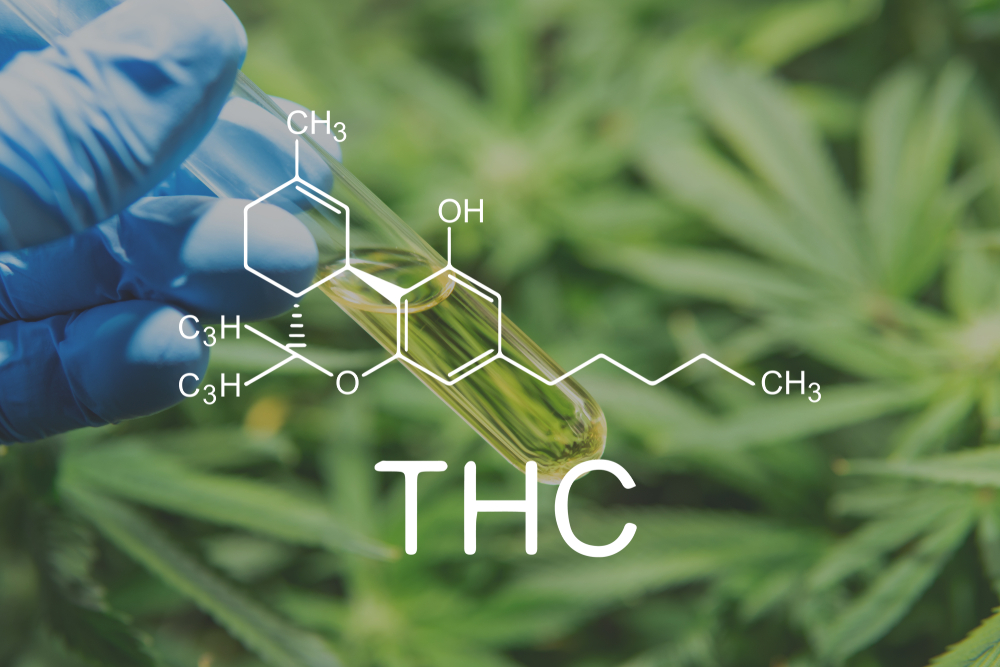Misinformation precedes prejudice. Unaware of the medical attributes of tetrahydrocannabinol (THC), several segments of the industry, the media, and even medical colleagues discriminate against the medical use of this phytocannabinoid.
Psychoactivity versus psychotoxicity in the use of THC
The confusion between these two concepts is often the major contributor to the fear of physicians in prescribing THC-rich products. Several colleagues tend to prescribe only CBD, ignoring the potential of THC due to its psychoactive properties.
No entanto, precisamos esclarecer que, apesar de sua psicoatividade, o THC é tão importante farmacologicamente quanto o CBD, apresentando um potencial terapêutico único.
CBD, in turn, although does not present psychoactive effects that are potentially intoxicating, it is also capable of altering people’s state of consciousness.
In other words, contrary to what many people think, CBD does have psychoactivity. Some reactions include:
- Alertness, which makes people more alert and willing.
- Drowsiness, especially when used alone or when titrated to high doses.
Both of these states are examples of psychoactive reactions.
It is important to differentiate between psychoactivity and psychotoxicity while using CBD and THC.
Although CBD has psychoactive potential, it does not have the intoxicating potential of THC. Nevertheless, psychotoxic reactions from the use of THC are rare in the context of medical use.
Sensations of relaxation, good humor, ease of socialization, and intensified pleasure in everyday activities, such as eating or watching a movie, have nothing to do with psychotoxicity (psychomotor agitation, visual and auditory hallucinations, sensations of persecution, generalized anxiety, etc.).
Therefore, one should not confuse a euphoric state resulting from the use of THC with psychotoxicity.
In fact, these euphoric moments arising from the assertive prescription of THC can result in transformative experiences for many patients who are in a state of profound suffering, both physical and psychological, representing an effective therapeutic strategy in controlling various clinical conditions.

THC’s therapeutic properties
Dispelling the myth of psychotoxicity in the use of THC, we now come to the main medical attributes of this phytocannabinoid.
1. Modifies the perception of painful stimuli
THC is critical in cases of chronic pain because it acts on endocannabinoid receptors in the sensory–motor cortex and amygdala, modulating the emotional and cognitive components related to pain perception.
A study by Lee et al. (2013) evaluated the use of THC in reducing induced pain. In the subjects evaluated, the reduction in discomfort from hyperalgesia was positively correlated with right amygdala activity. The results demonstrated that amygdala activity contributed to the interindividual response to cannabinoid analgesia and suggested that the dissociative effects of THC on the brain were relevant to pain relief.
Furthermore, the synergistic analgesic effect of THC concomitant with opioids, at least in part, is mediated by delta and kappa receptors, indicating an intimate connection between cannabinoid and opioid signaling pathways in modulating pain perception..
2. It is antispasmodic and muscle relaxant
É bastante evidente o efeito anti-espasmódico e relaxante muscular do THC. A primeira formulação à base de Cannabis registrada em vários órgãos regulatórios do mundo, o Sativex®was approved for the treatment of pain associated with the spasticity of Multiple Sclerosis.
THC modifies the perception of painful stimuli and reduces spasticity not only in patients with multiple sclerosis but also in several others who have muscle spasms resulting from other neurological sequelae like after a stroke or a TBI.
3. Appetite and sleep inducer
One of the best known and documented attributions of THC is appetite stimulation. THC-enriched cannabis-based medications are successfully administered to cancer patients and patients with cachexia-inducing diseases such as AIDS and certain neuropsychiatric disorders.
Another important property of THC, especially when associated with the terpene myrcene, is sleep induction. Several studies have demonstrated this “side effect” of THC. In clinical practice, it is common to reduce and wean patients who suffer from insomnia and other sleep disorders from the use of benzodiazepines.
4. Anti-emetic potential
Another medical property of THC is its anti-emetic potential, already well known and exploited for millennia. Several studies have already demonstrated a dramatic reduction in emesis associated with chemotherapy with the use of synthetic cannabinoids, such as dronabinol and nabilone.
In cancer patients, THC, besides having an anti-emetic effect, stimulates appetite, reduces pain and anxiety, and induces a better sleep pattern. Thus, it is a valuable therapeutic complement in oncologic patients undergoing radiotherapy and chemotherapy regimes.
Accessing qualified scientific knowledge is fundamental to fight misinformation and, consequently, prejudice. At WeCann Academy, we help physicians access this disruptive knowledge and incorporate new therapeutic tools safely and effectively.
Do you want to take part in this community? Contact us and learn more about it!
References
BABSON, Kimberly A.; SOTTILE, James; MORABITO, Danielle. Cannabis, Cannabinoids, and Sleep: a Review of the Literature. Current psychiatry reports, v. 19, n. 4, p. 23, 2017.
RUSSO, Ethan B.; GUY, Geoffrey W.; ROBSON, Philip J. Cannabis, pain, and sleep: lessons from therapeutic clinical trials of Sativex, a cannabis-based medicine. Chemistry & biodiversity, v. 4, n. 8, p. 1729-1743, 2007.
Meiri E, Jhangiani H, Vredenburgh JJ, Barbato LM, Carter FJ, Yang HM, Baranowski V. Efficacy of dronabinol alone and in combination with ondansetron versus ondansetron alone for delayed chemotherapy-induced nausea and vomiting. Curr Med Res Opin. 2007 Mar;23(3):533-43. doi: 10.1185/030079907×167525. PMID: 17355735.
Lee MC, Ploner M, Wiech K, Bingel U, Wanigasekera V, Brooks J, Menon DK, Tracey I. Amygdala activity contributes to the dissociative effect of cannabis on pain perception. Pain. 2013 Jan;154(1):124-134. doi: 10.1016/j.pain.2012.09.017. PMID: 23273106; PMCID: PMC3549497.
